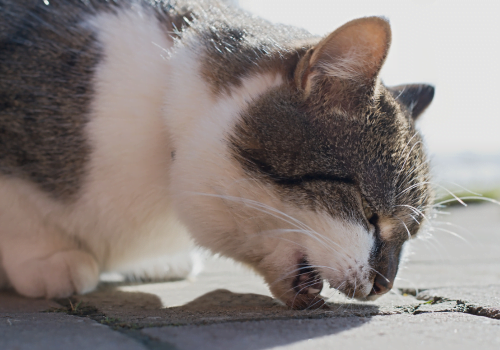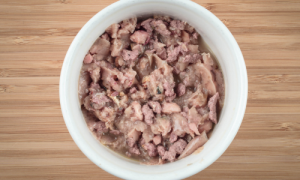Estimated reading time: 5 minutes
It’s no fun to hear that retching sound your cat makes when they start to dry heave. You immediately feel concerned for your four-legger, wondering what you can do to help them to feel better.
In this article, we’ll talk about what causes dry heaving (a hairball is the most common reason) and what you can do about it.
What is Dry Heaving?
You are very familiar with the ritual your cat goes through while dry heaving and vomiting: its diaphragm and abdominal walls contract. This causes the airway to close off and the lungs to expand, preparing your cat’s body to get rid of its stomach contents. But when your cat starts to cough or gag without vomiting, that is called dry heaving.
Reasons Why Your Cat May Be Dry Heaving
The most common cause of dry heaving is hairballs, mostly as a result of your cat’s grooming routine.
You’ve probably heard that your cat’s tongue has many tiny, hook-like structures. These act like a comb to catch loose hair, which is then swallowed. Normally, this hair passes harmlessly through your cat’s digestive tract. But sometimes, the hair clumps in the stomach, forming hairballs.
A normal, healthy cat should only get hairballs about once per month or less. Hairballs from grooming are more likely to appear in long-haired breeds, such as Persians or Maine Coons, or in cats that shed more frequently or groom themselves compulsively.
Dry heaving may also be an indication of other issues, such as parasites, viruses, toxic substances, liver disease, kidney disease, heart disease, gastroenteritis, or a foreign body stuck in your cat’s throat. If you suspect anything more serious than hairballs, contact your vet immediately.
What Should I Do if My Cat is Dry Heaving?
You should closely monitor your cat. Occasional dry heaving in healthy cats is normal. If you notice your cat is frequently dry heaving, you can try some of the hairball prevention steps mentioned below.
But if you notice other symptoms such as loss of appetite, constipation, diarrhea, nausea, a swollen abdomen, breathing difficulty, or lethargy, you should immediately seek veterinary guidance.
How to Prevent Cat Dry Heaving from Hairballs?
As mentioned earlier, the most common cause of dry heaving in cats is hairballs, so treating your cat’s hairballs is the first step.
Hairballs can lead to dry heaving. They are usually harmless, but if left untreated they can grow in size, eventually blocking your cat’s intestinal tract, and becoming dangerous.
You should brush your cat regularly to reduce loose hair that they swallow while grooming themselves.
You can feed them cat food that is formulated to reduce hairballs.
Catnip is a digestive aid that can help eliminate and prevent hairballs, and most cats love the taste.
Most pet stores also carry medicine such as hairball lubricant or soft digestive chews.
Make sure your cat has access to plenty of fresh, clean water to lubricate their system. If they are hesitant to drink water on a regular basis, you might check out pet water fountains to see if one is right for your cat.
You can also give your cat a teaspoon of olive oil or melted butter mixed in with their food to help them pass hairballs.
All of these remedies can reduce the frequency of hairballs, but not completely prevent them. If your cat is troubled by hairballs on a frequent basis, ask your vet for further advice.

The Veterinary Option: When Should You Take Your Cat to the Vet?
Frequent hairballs can be a symptom of digestive issues, overgrooming, or something even more serious as mentioned earlier. If you hear your cat crying out or growing restless before dry heaving, your cat is telling you it’s in pain. Any of these should be good reasons to reach out to your vet to discuss the next steps on how to help your cat feel better.
Conclusion
Chances are good that your cat’s dry heaving is a normal reaction to hair in their system from grooming. But to keep your cat healthy and happy, make sure you pay attention to any warning signs that indicate something more serious.
We welcome your comments below with your own experiences, as well as sharing on our social media accounts. Please join us in the conversation about our beloved feline friends!









Spotting your captivating post on the WordPress feed brought a smile to my face, prompting me to reach out and say hello!
Your writing has piqued my interest, and I’m eager to explore your future posts!
Consider me a dedicated reader, eagerly awaiting your next compelling piece of content!
Came across your post on the WordPress feed and just wanted to send a friendly shout-out! Your content caught my attention, and I’m thrilled to explore more of your thought-provoking posts. Looking forward to embarking on this reading adventure with you!